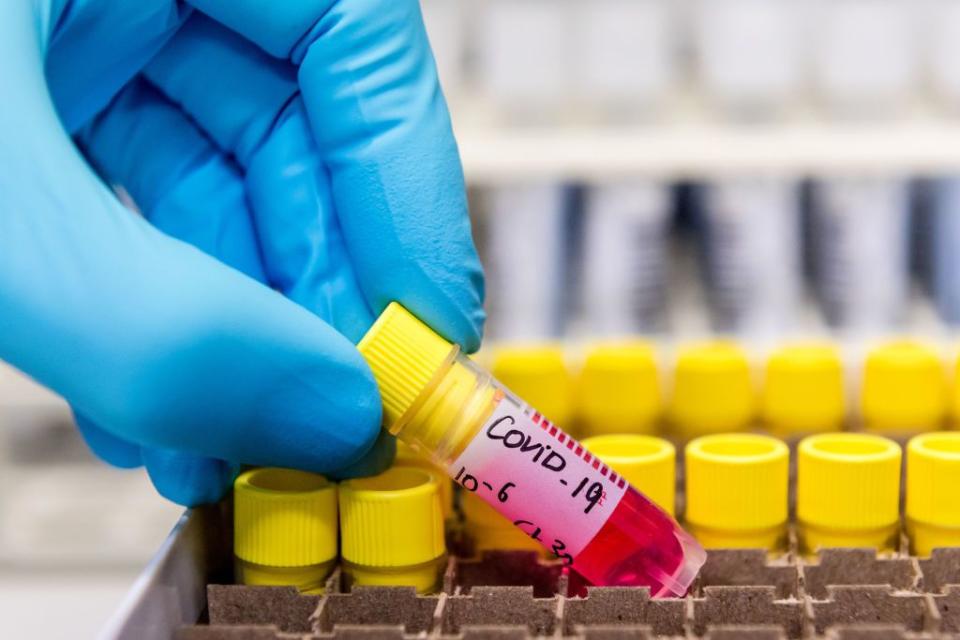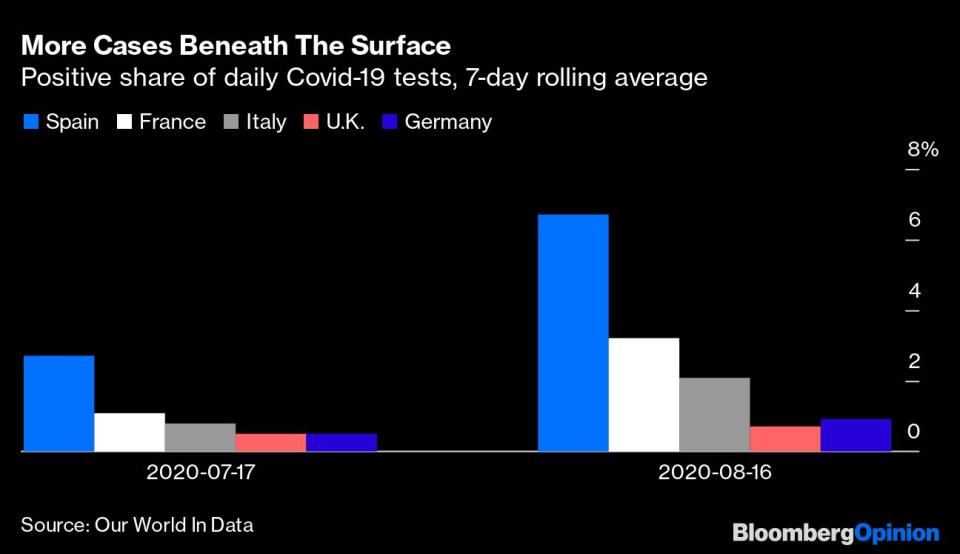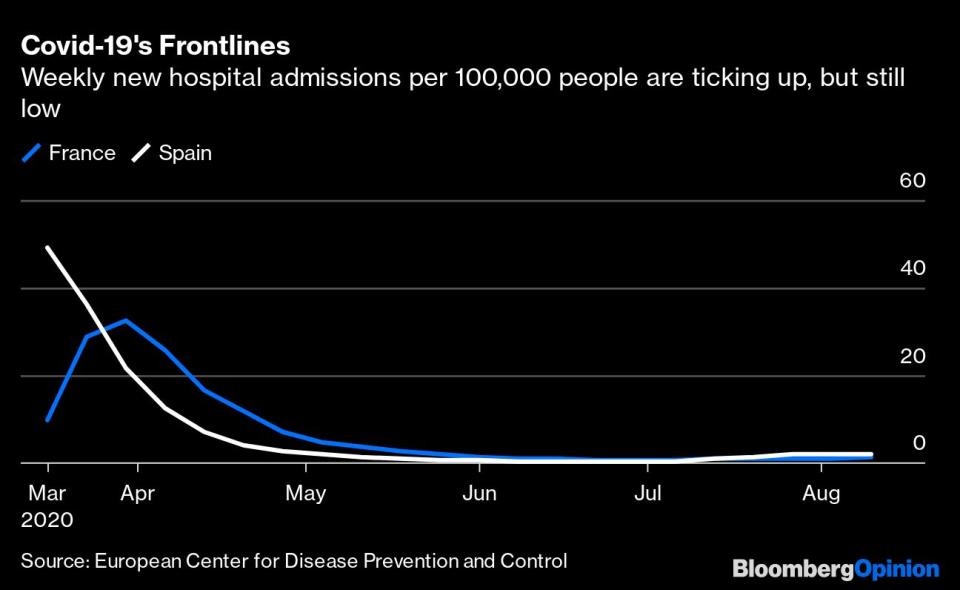COMMENT: A Cure For COVID-19 Could Be Right Under Our Noses

By Lionel Laurent
Nobody wants to go back to a national coronavirus lockdown. France’s Emmanuel Macron and Spain’s Pedro Sanchez are ruling out blanket stay-at-home restrictions, even as COVID-19 cases surge higher. Their motives are clear: Another round of widespread lockdowns would tank the economy and split society, and would also be an admission of defeat from politicians and public-health officials who – like Sanchez – insist we are “better prepared” to control the epidemic than we were in the dark days of spring.
The less draconian strategy of combining preventative measures, while waiting for a vaccine to emerge, is a commendable one. But there are limits here, too. Mask policies are becoming tougher and more complicated, risking confusion and hostility. International travel curbs, which haven’t always proven effective or easy to enforce, are piling up again. And while testing and tracing are vital for improving our ability to catch cases, resource gaps remain. Spain is enlisting the army to help its efforts.
The tangle of rules will become harder to enforce as time goes on. History suggests citizens eventually chafe at epidemic edicts, from the mask “slackers” of the 1918-19 Spanish flu to the residents of 19th-century Naples who, as historian Frank Snowden tells it, protested anti-cholera rules by eating vast quantities of fruit the authorities might confiscate. There’s a shelf life to such measures.

New emphasis needs to be put on the curative on top of the purely preventative. While vaccines loom large in the collective imagination, finding a treatment for the virus would be the real game-changer. It would likely be cheaper and quicker to manufacture than a vaccine and lessen risks such as low take-up or a fight over doses. Halting infection or deaths would rob COVID-19 of its most terrifying traits.
Sadly, seven months into this pandemic, there has been little progress. We are better at treating serious cases, but not by much. A paper last month by the French government’s scientific advisory committee cited low-cost anti-inflammatory drug dexamethasone – found to lower deaths among patients needing breathing assistance – and arthritis drug tocilizumab as showing effectiveness.

This is no ordinary virus, with multiple possible points of attack including provoking an out-of-control immune response. Finding a treatment requires resources. The Milken Institute counts 316 treatments currently being studied worldwide, alongside 203 vaccines.
Yet time has been wasted. Rushed clinical trials, intended to produce results quicker, have only sown confusion and stoked hype. So far there have been more disappointments, such as anti-malaria drug hydroxychloroquine or HIV therapies including lopinavir, than successes.
The result is that hospitals are still ultimately at the virus's mercy. A predominance of milder symptoms and more experience in treating Covid-19 has seen the estimated global case fatality rate fall, to 3.5%, but suggestions that the virus has mutated into a much less virulent form are still inconclusive. Hospitalizations and deaths, while rising much more slowly than cases, are starting to tick up again in countries such as France and Spain. Julien Carvelli, an intensive-care doctor at La Timone Hospital in Marseille, tells me his concern is a co-mingling of Covid-19 sufferers with other patients as winter draws near.

There are ways to improve the search for a treatment, such as adaptive clinical trials. More international cooperation would also boost their size and avoid duplication. It’s incredibly dispiriting that multi-country trials in Europe like the France-led “Discovery” have failed to reach critical mass. Getting countries to work together is harder than devising no-fly zones, but the rewards will ultimately be greater.
The price tag for developing COVID-19 drugs, such as repurposing generics, could come to $200 million per treatment (a fraction of the $1 billion it can cost to produce a single vaccine). That’s all the more enticing given that COVID-19 may end up requiring a cocktail of different therapies. Jeffrey Aronson, a clinical pharmacologist at the Center for Evidence-Based Medicine at Oxford University, last month likened using a mix of drugs to a siege strategy attacking all sides of the virus’s castle: Preventing the virus from entering cells, stopping it from reproducing once it gets inside, and changing the body’s immune response by boosting or suppressing it at relevant times.
None of this means that more immediate prophylactics such as masks and social distancing should be dropped. But scientific research needs to be supported and coordinated as part of the plan. If we are due a fresh spike in cases this fall, patient trials need to be ready.
Instead of being trapped in a binary debate about dumb or smart lockdowns, the focus should be on finding a treatment that makes all kinds of lockdown obsolete. And it could be right under our masked noses.
Lionel Laurent is a Bloomberg Opinion columnist covering the European Union and France. He worked previously at Reuters and Forbes.
© 2020 Bloomberg L.P.

